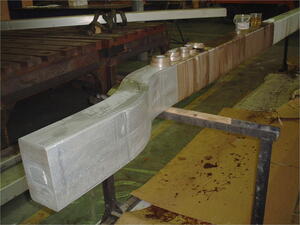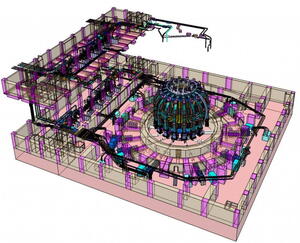DC busbars: an eight kilometre aluminium snake
A DC busbar is to ITER what a power cable is to an ordinary appliance: a device that connects the electrical components to the power source. But in ITER, even the simplest functions require highly sophisticated equipment. Power in ITER will be fed to the different magnetic coils in the machine through a water-cooled, eight kilometre-long winding and bending aluminium snake that will weigh close to 1,000 tonnes.
"Because they are very conductive metals, silver or more realistically copper would have been the ideal choice," says Inho Song, an engineer with the Coil Power Supply System Division. "But of course, we had to consider cost. So we settled for aluminium, which is three times cheaper than copper and still offers relatively little resistance."
The biggest busbars—the ones that feed the 19 toroidal field coils in the machine—will carry close to 70 kiloamps of current, which is 7,000 times more than, say, a washing machine power cable. In these conditions, the aluminium's resistance to the electrical flow will generate heat, just like in a light bulb or an electrical heater,and the busbars will have to be cooled by a pressurized water system.
DC busbars are part of Russian procurement, and a real-scale prototype has just been produced at the Efremov Institute in Saint Petersburg. It is destined for the poloidal field coil system and will carry "only" 55 kiloamps. "We have design values for various parameters like current density, insulation, cooling requirements and temperature," says Inho. "We will test them all on the prototype in the coming months."



